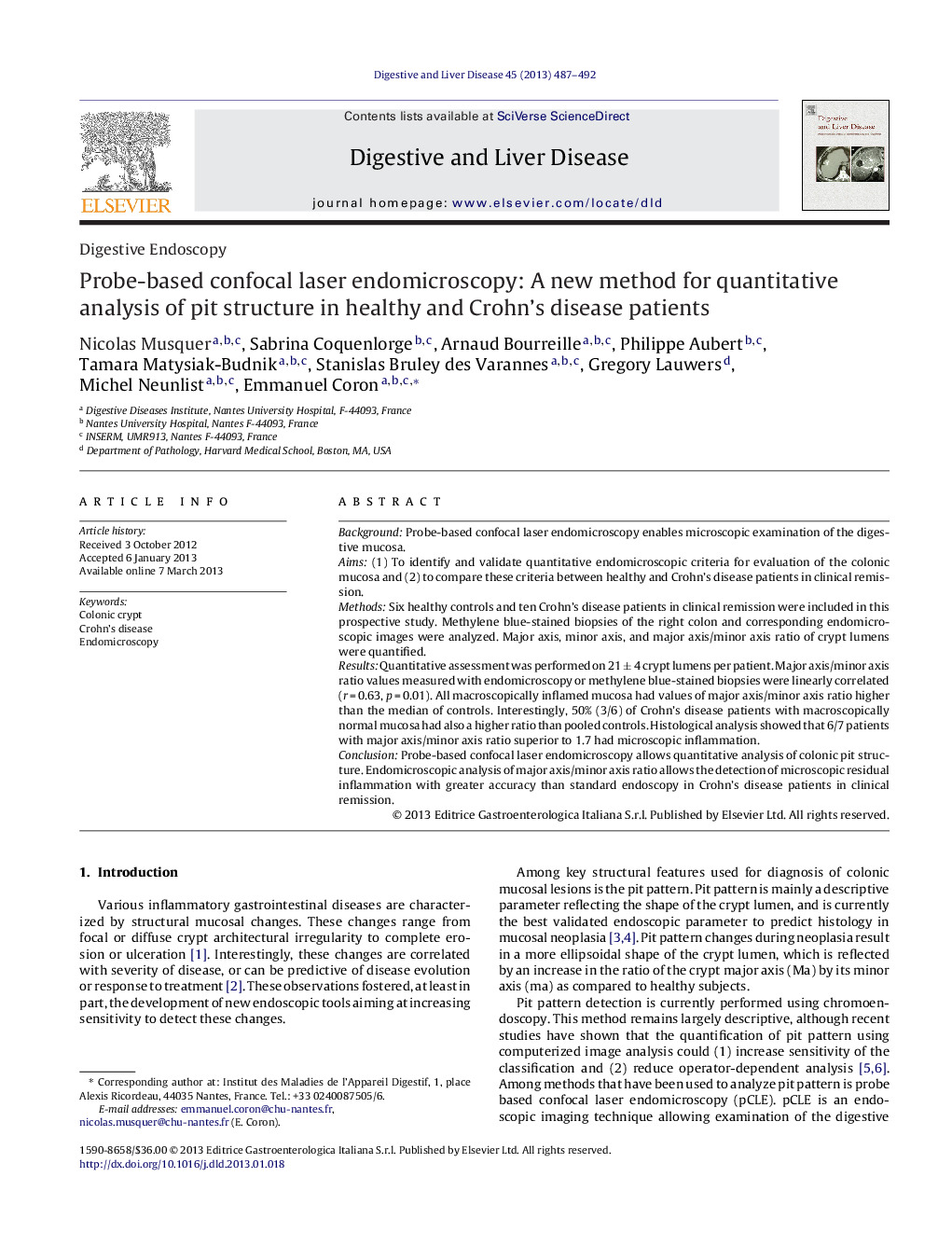| Article ID | Journal | Published Year | Pages | File Type |
|---|---|---|---|---|
| 3261966 | Digestive and Liver Disease | 2013 | 6 Pages |
BackgroundProbe-based confocal laser endomicroscopy enables microscopic examination of the digestive mucosa.Aims(1) To identify and validate quantitative endomicroscopic criteria for evaluation of the colonic mucosa and (2) to compare these criteria between healthy and Crohn's disease patients in clinical remission.MethodsSix healthy controls and ten Crohn's disease patients in clinical remission were included in this prospective study. Methylene blue-stained biopsies of the right colon and corresponding endomicroscopic images were analyzed. Major axis, minor axis, and major axis/minor axis ratio of crypt lumens were quantified.ResultsQuantitative assessment was performed on 21 ± 4 crypt lumens per patient. Major axis/minor axis ratio values measured with endomicroscopy or methylene blue-stained biopsies were linearly correlated (r = 0.63, p = 0.01). All macroscopically inflamed mucosa had values of major axis/minor axis ratio higher than the median of controls. Interestingly, 50% (3/6) of Crohn's disease patients with macroscopically normal mucosa had also a higher ratio than pooled controls. Histological analysis showed that 6/7 patients with major axis/minor axis ratio superior to 1.7 had microscopic inflammation.ConclusionProbe-based confocal laser endomicroscopy allows quantitative analysis of colonic pit structure. Endomicroscopic analysis of major axis/minor axis ratio allows the detection of microscopic residual inflammation with greater accuracy than standard endoscopy in Crohn's disease patients in clinical remission.
